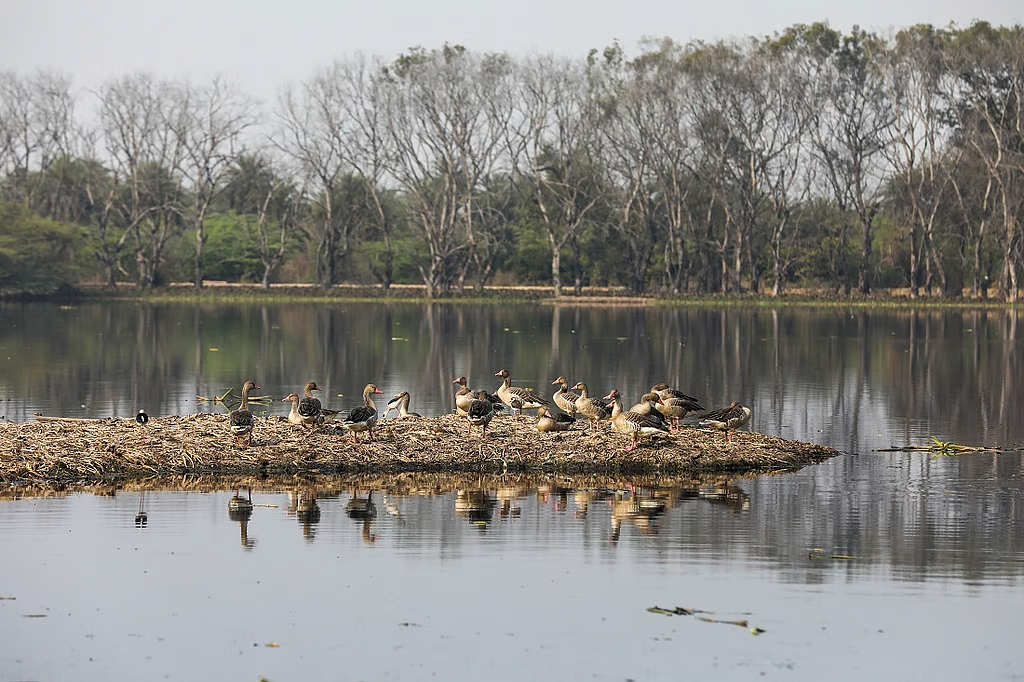Surajpur Wetland | 04 Feb 2025
Why in News?
The Greater Noida Authority has developed a project to safeguard and preserve the Surajpur wetland.
Key Points
- Threat from Polluted Wastewater:
- The wetland faces a serious threat due to the indiscriminate discharge of highly polluted wastewater into its channels, endangering its ecosystem.
- Need for Technical Assistance:
- According to the authority, research institutes, non-government organizations (NGOs), and environmental experts can provide technical support to protect and restore the wetland.
- Ecological Significance:
- Located in the heart of the industrial city of Greater Noida, the Surajpur wetland serves as a vital wildlife habitat, making its conservation crucial.
- Geographic Spread and Features:
- The sanctuary spans 325 hectares, including a 60-hectare natural lake situated along the Dadri-Surajpur-Chhalera (DSC) road, approximately 20 km from Noida.
- Haven for Migratory Birds:
- During the winter season, the wetland attracts various species of migratory birds, enhancing its ecological and environmental value.
Surajpur Wetland
- Location and Administrative Jurisdiction:
- The wetland is located near Surajpur Village in Dadri Tehsil of Gautam Budh Nagar district.
- It falls under the jurisdiction of the Greater Noida Industrial Development Authority, Uttar Pradesh.
- Urban Wetland in the Yamuna Basin:
- The wetland serves as an excellent example of an urban wetland within the Yamuna River basin.
- Ecological Importance and Green Cover:
- It acts as a green lung for Greater Noida, covering a catchment area of 308 hectares, with 60 hectares dedicated to the waterbody.
- Recognition as an Important Bird Area (IBA):
- BirdLife International has classified the wetland as an Important Bird Area (IBA) due to its significance in bird conservation.
- Breeding and Wintering Habitat for Waterfowl:
- The wetland provides a breeding ground for waterfowl such as Spot-billed Duck, Lesser-whistling Duck, Cotton Pygmy Goose, and Comb Duck.
- It also supports wintering waterfowl, including Red-crested Pochard, Ferruginous Pochard, Bar-headed Goose, Greylag Goose, Common Teal, Northern Shoveler, and Gadwall.
- Diverse Wildlife Presence:
- In addition to a rich bird population, the wetland sustains six mammal species, including Nilgai, Indian Grey Mongoose, Indian Hare, Golden Jackal, and Five-striped Squirrel.
- Environmental Threats:
- The wetland faces significant threats due to the indiscriminate discharge of highly polluted wastewater into its channels, posing risks to its ecosystem.

